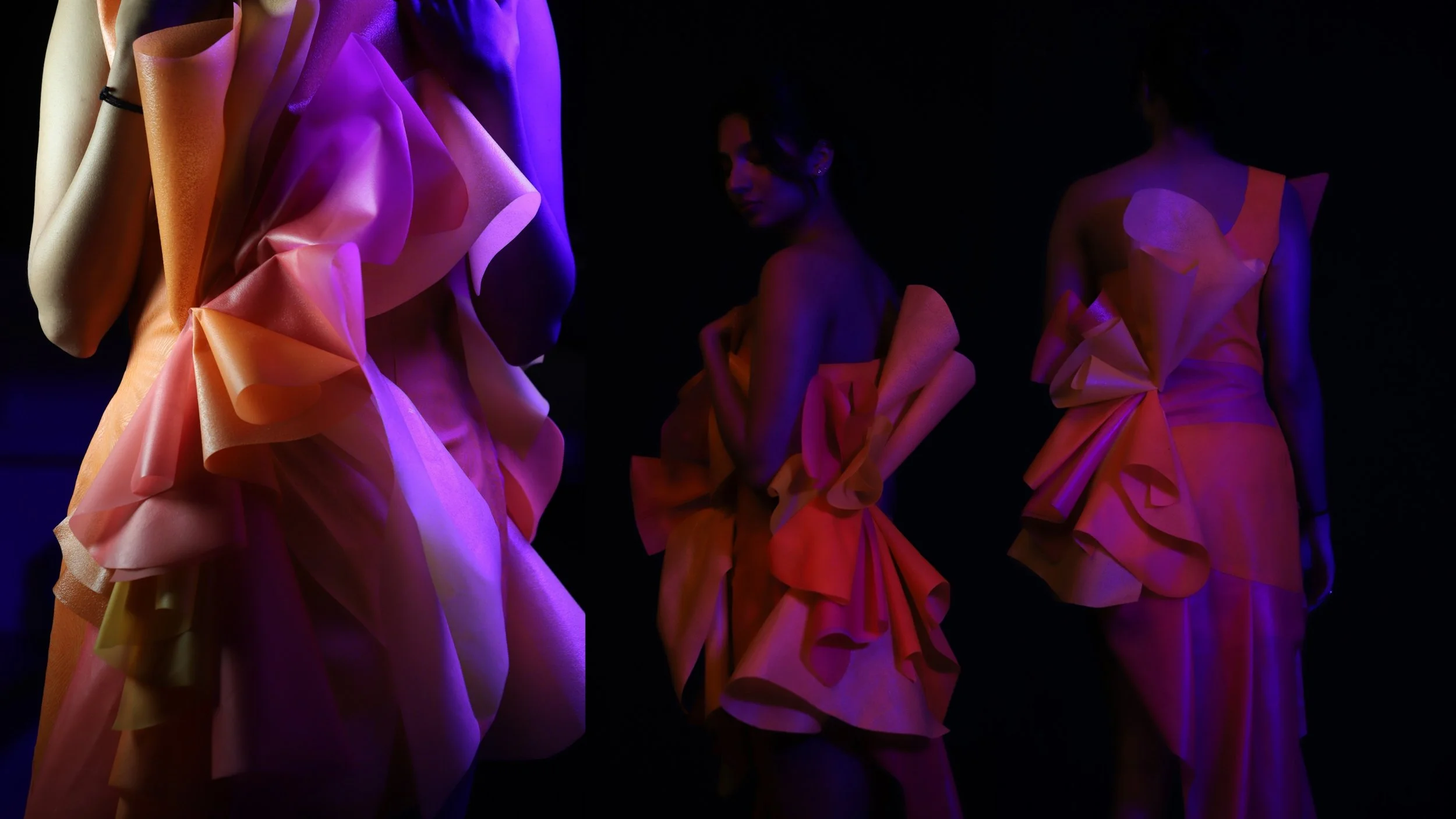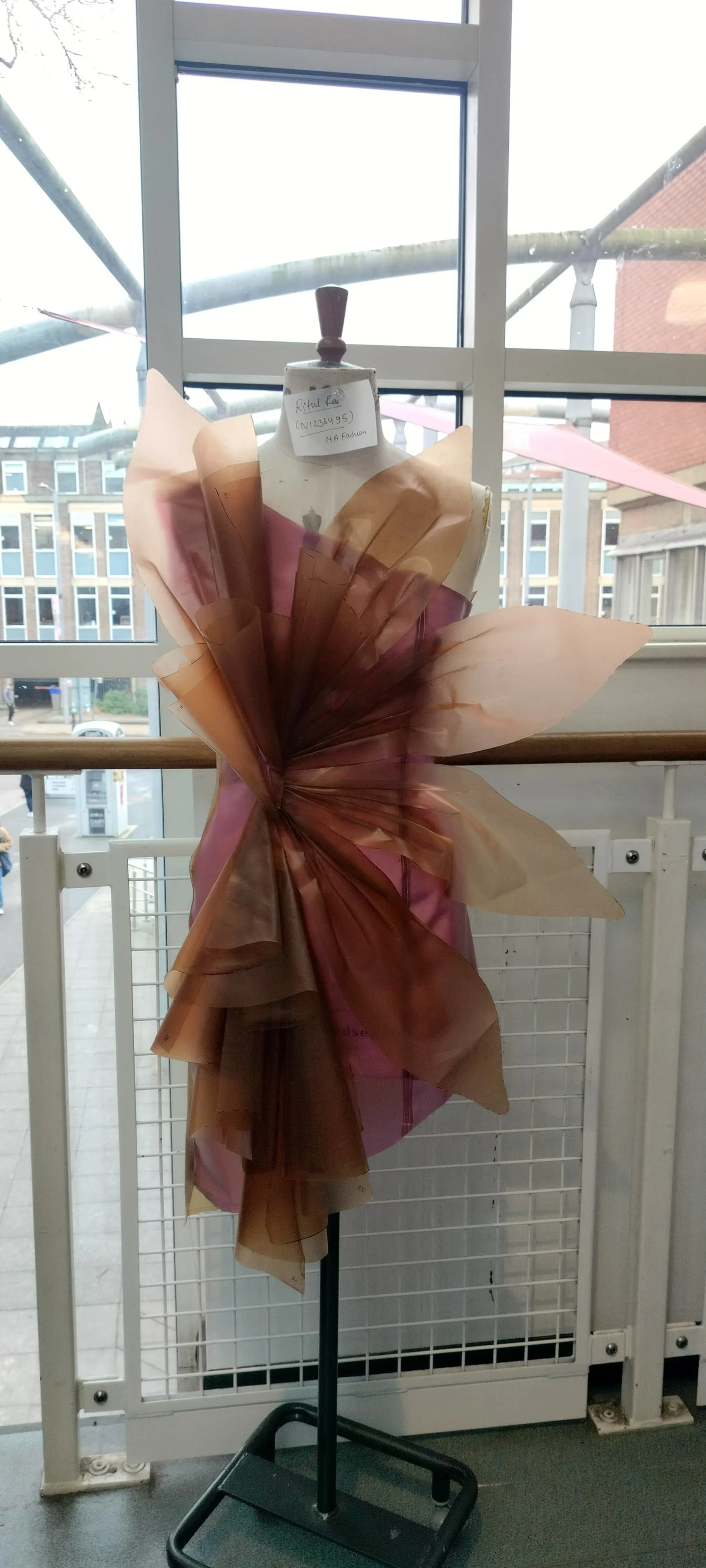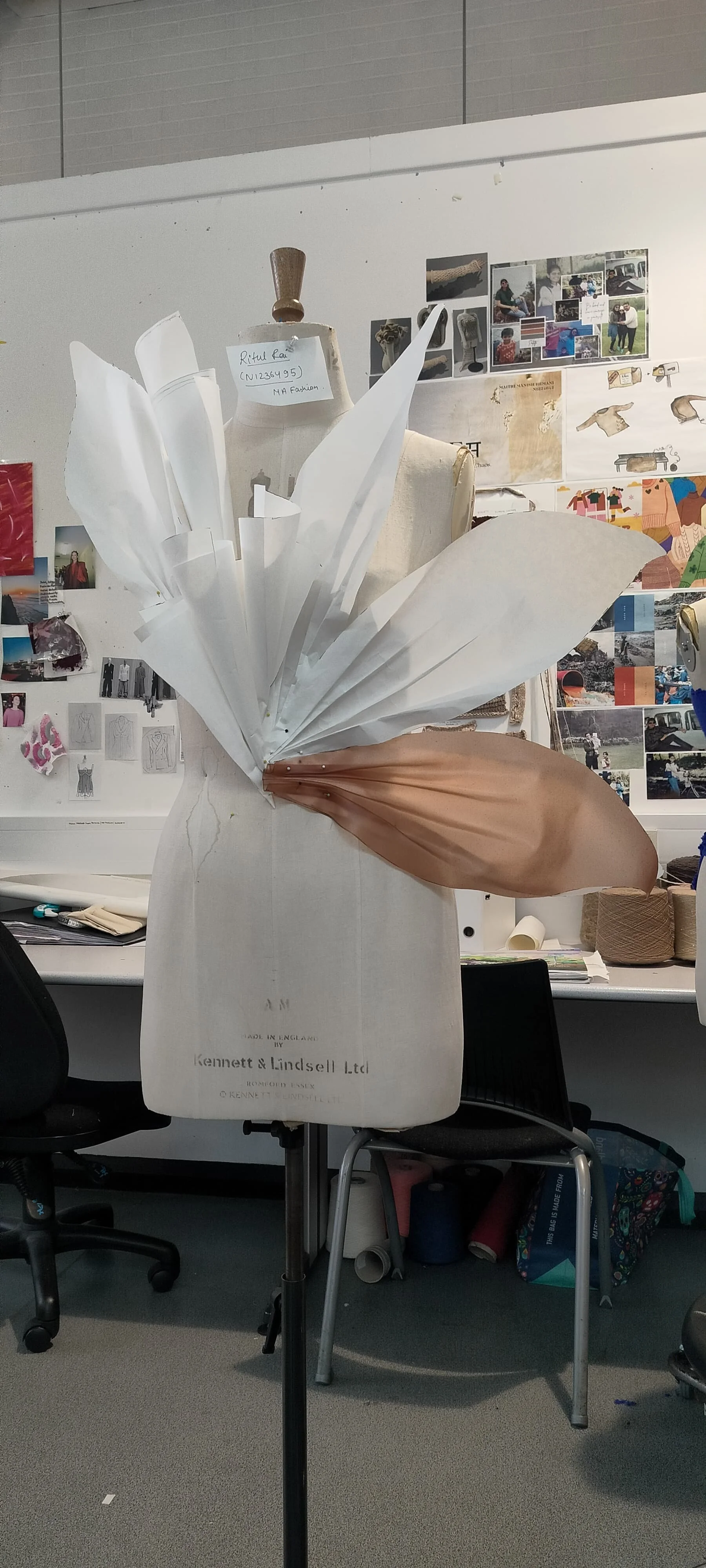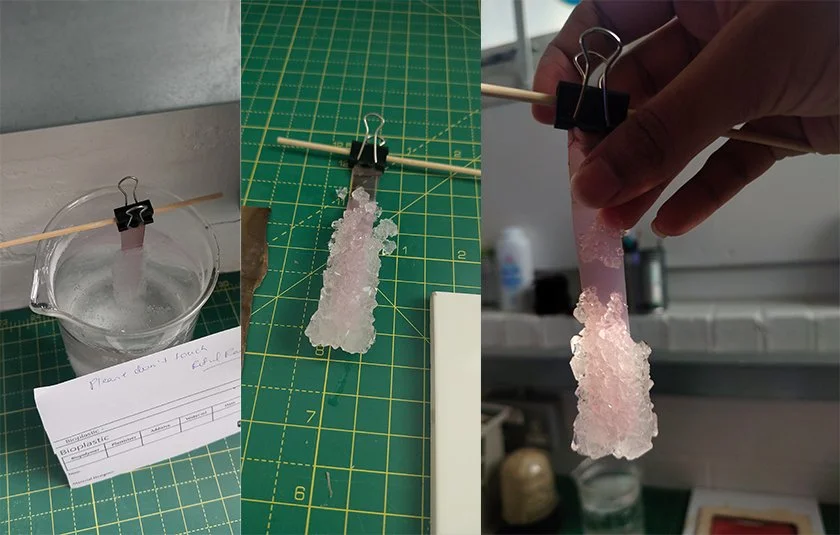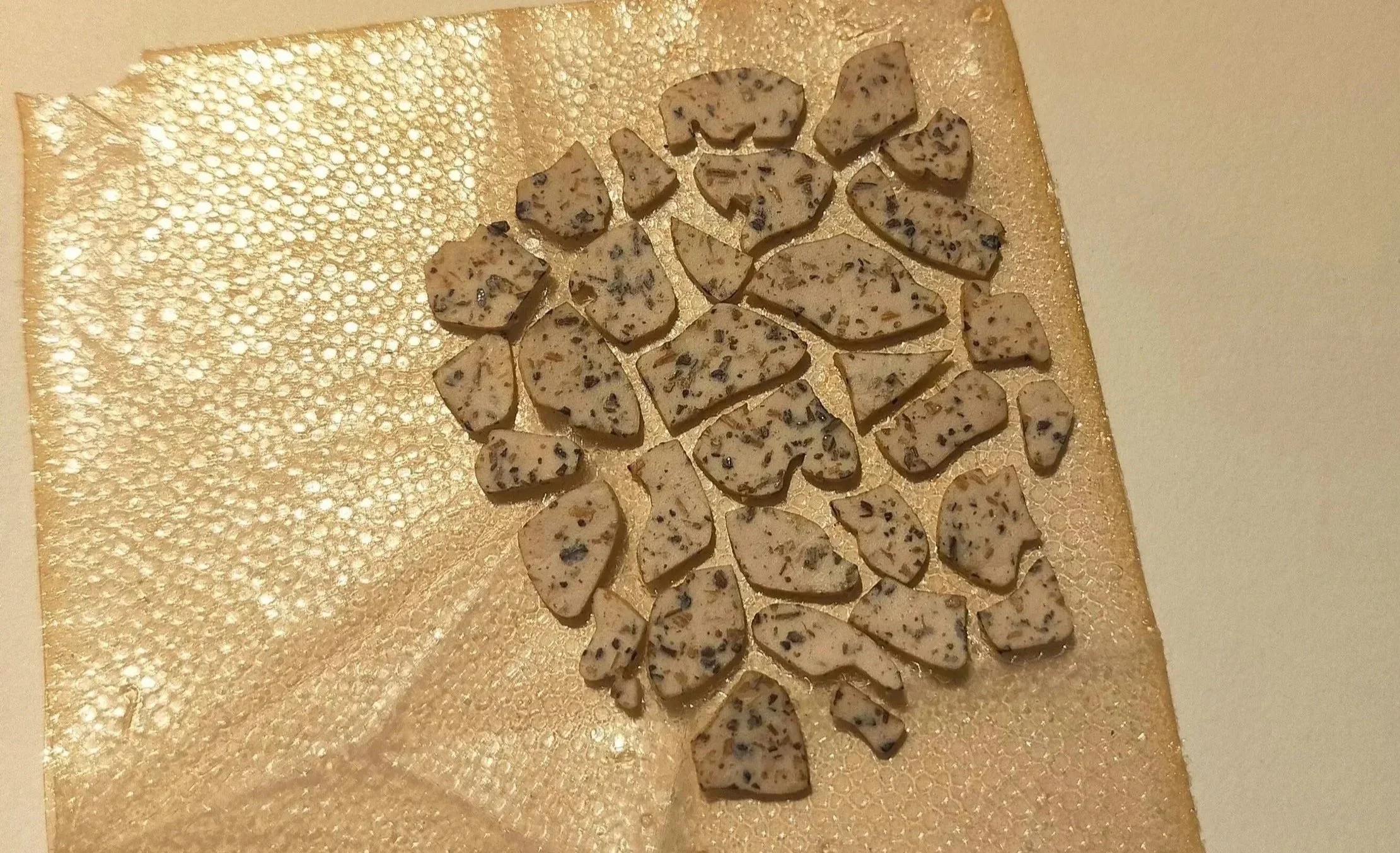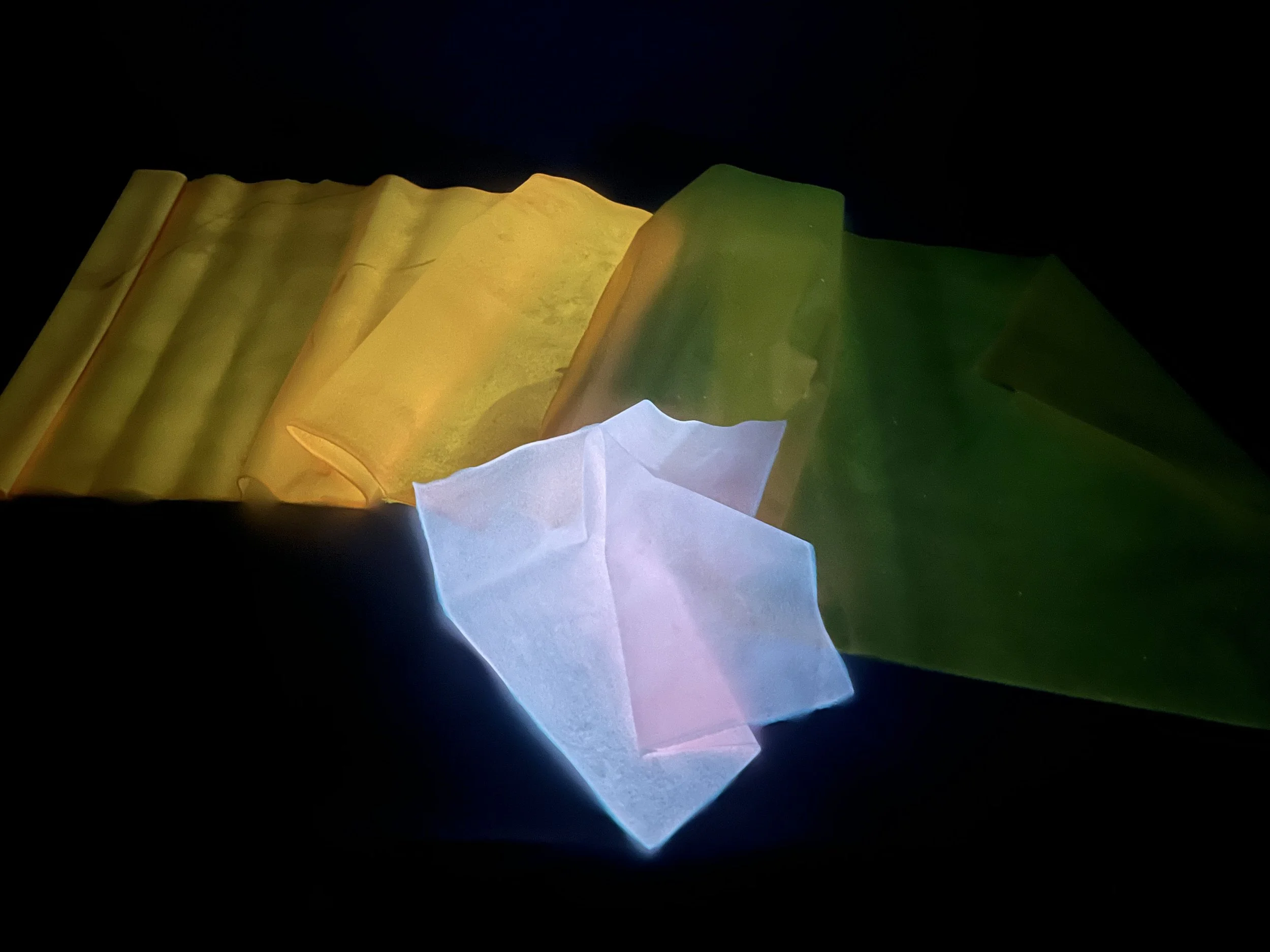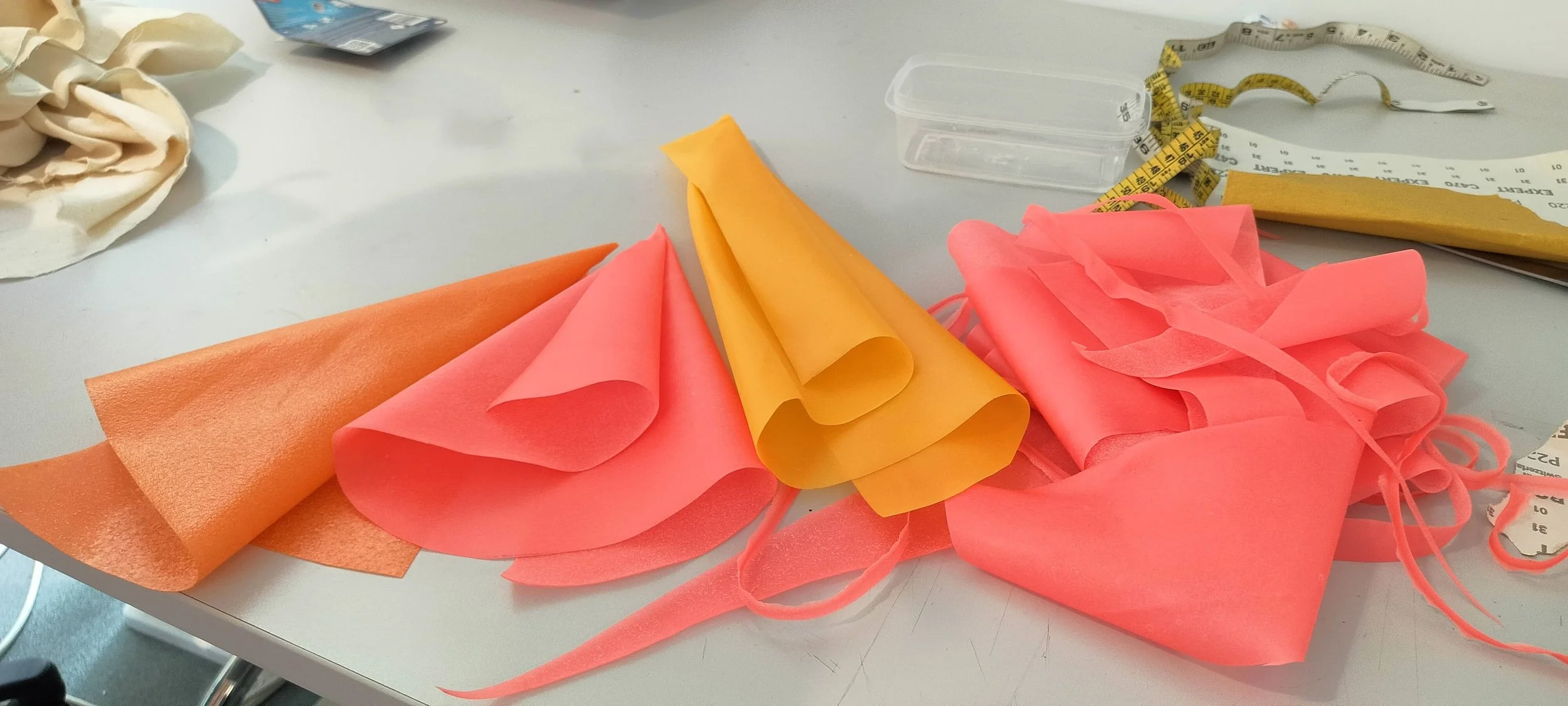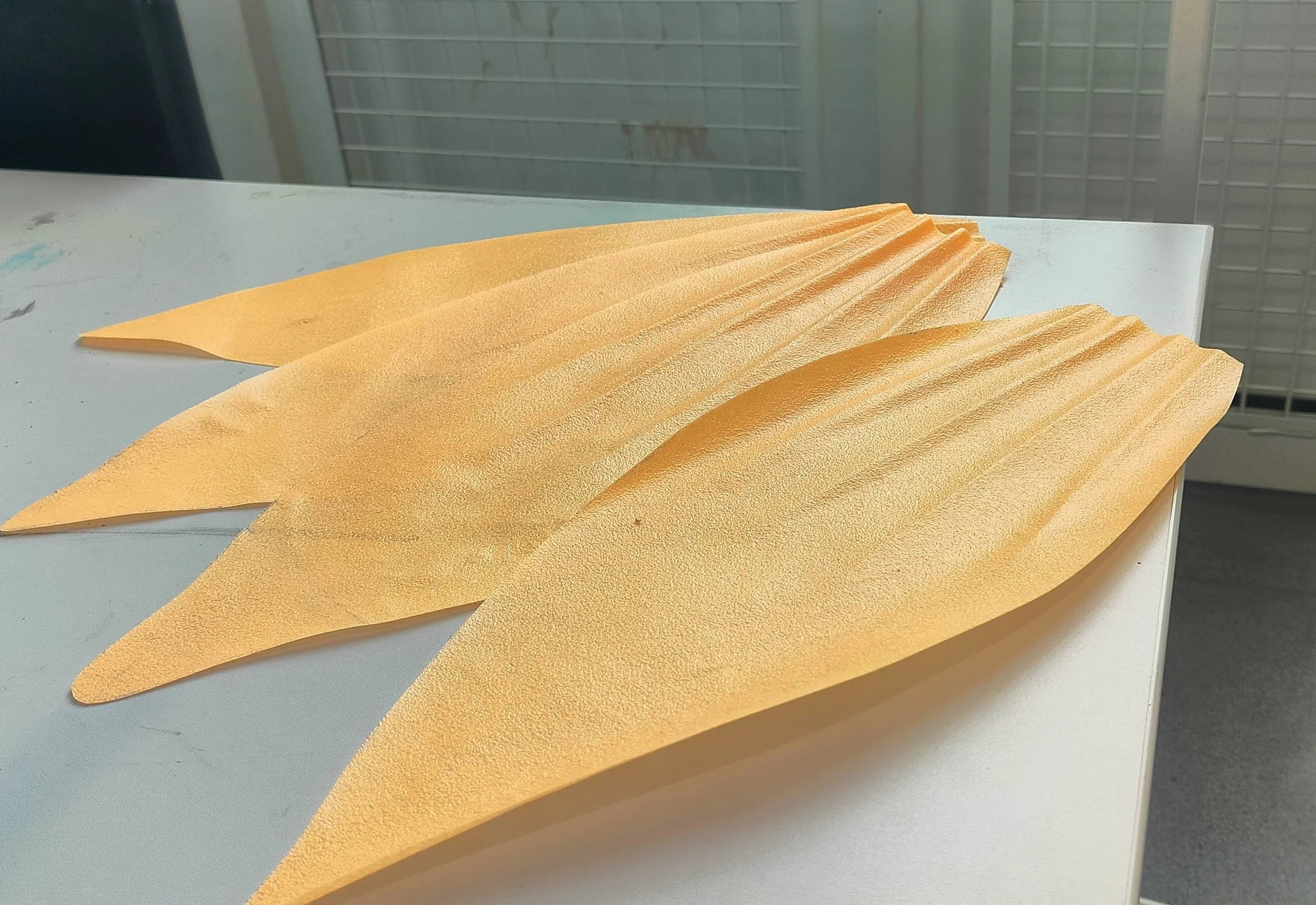The Last Biobloom — An Intimate Manifesto of Regenerative Elegance
In a moment when fashion is driven by speed, flooded with endless products, and constantly chasing the next new trend, The Last Biobloom by Ritul Rai offers something altogether different. It does not demand attention through excess or spectacle. Instead, it slows us down, inviting reflection through texture, impermanence, and grace.
Impermanence as Beauty
Rai’s collection is not just sustainable; it is soulful. Rather than treating biomaterials as a passing experiment or a technical showcase, her work poses deeper questions. Can a garment hold memory? Can the act of decomposition itself be seen as a form of beauty? Can fashion teach us to let go? These questions may sound abstract, but in Rai’s work they become tangible. Her garments are designed to carry the traces of their own life cycle: the folds, cracks, and textures that form over time, and then to slowly dissolve. In doing so, they remind us that clothing, like life itself, holds stories while also teaching us how to release them.
In this way, Rai is inviting us to see fashion from its very foundations in a new light, not as fast, disposable novelty, but as reflective, cyclical, and meaningful. Her pieces, crafted from agar-based bioplastics and dyed with non-toxic pigments, are intentionally fragile. They shift with light, time, and air in ways that feel organic and alive. Where much of the industry resists age and deterioration, The Last Biobloom embraces them.
Lessons in Patience & Failure
Her philosophy is inseparable from her process. Her work isn’t limited to labs or flashy designs. It’s practical and hands-on, built on patience and curiosity. She carefully adjusts pH levels like someone nurturing a garden and adds glycerin for its texture as well as its function. Her choices reflect both scientific attention and artistic intuition.
“Working with biomaterials brought along with it a great teaching point about the illusory nature of control,” she says. “These materials are in constant movement and respond to their surroundings; hence they tend not to follow the maker's plan. They might crack, shrink, and change their characteristics as time goes by.”
“It felt like failure at first but I then realized the unpredictability is a part of the conversation between the artist and the material. It has been a journey of patience and adaptability showing that material has to be allowed to unfold its own rhythm. There was a time when every ‘failure’ was turned into a moment of exploration—an opportunity to observe, to adjust and to innovate in ways that were not obvious before. And it was those so-called mistakes that often led to the most interesting textures and effects. The process, indeed, very much became as meaningful, if not more so, than the final result.”
The Role of Light
Lighting plays a crucial role in bringing these pieces to life. Under different intensities and angles, the bioplastics reveal unexpected qualities, glowing softly, turning translucent, or shifting in color. This responsiveness makes each garment feel alive, as though it is breathing with its surroundings.
Many have already noted the glowing elements, the transparent layers, the references to lilies and hydrangeas. But the real impact of this collection is found not in how it looks, but in how it feels. These garments breathe and soften. They change slowly and then disappear. They do not aim for longevity in the traditional sense. They ask us to rethink what it means to create with purpose and release with grace.
Between Digital and Physical
Rai’s use of digital tools, especially CLO3D (3D fashion design software), is equally thoughtful. Where others might use the software as a quick design shortcut, she sees it as a way to reduce waste before anything is physically made. Once designs move from screen to material, techniques like laser rastering allow her to etch delicate patterns into bioplastics, bridging digital precision with the tactile unpredictability of living materials.
“Digital prototyping allows me to think structurally and conceptually — mapping proportions, silhouettes, and interactions between form and space with precision,” Rai says. “I can experiment rapidly, adjust shapes, and visualize ideas without using physical materials, which makes the process highly efficient and sustainable.
“In contrast, physical making is all about using one’s senses and being intuitive. The real materials have their own physical properties and characteristics that the digital simulations cannot completely capture—they interact with the human senses of touch, weight, texture, and resistance in unpredictable ways. The fabric, for instance, may drape, fold, stretch, or hold differently than what I had imagined digitally. The change from screen to hand not only transforms a virtual concept into something alive, sensory, and human but also, reveals the potentials that only come out when one gets involved with the material.”
Heritage and Continuum
What stands out even more is her refusal to treat sustainability as a purely technical goal. For Rai, it is inseparable from culture, her vision for future work is grounded in Indian textile practices and community-led making.
“Engaging with Indian textile heritage, to me, is giving respect to the craft and at the same time viewing it through a present-day perspective,” she explains. “Sustainability has always been the core of Indian textiles, be it through natural dyes and handwoven fabrics or circular production methods that emphasized longevity and minimal waste, and all this was done even before sustainability became a global movement. My heritage shapes my awareness of material and process — the slow making, the respect for handwork, and every fiber carrying the story.
This philosophy translates directly into her design approach. She is not simply creating garments; she is carrying forward a lineage. The care, patience, and reverence that have defined Indian textiles for centuries shape how she experiments with bioplastics today. For her, material innovation is not a break with tradition but its continuation in a new language.
“For me, the heritage is a story of the past not as nostalgia, but as a continuum — putting the old wisdom into conversation with the new technologies and modern design thinking. My future goal is to raise the international profile of Indian textiles and artisans, demonstrating how they have always been so deeply sustainable and innovative. This belief is the very essence of my forthcoming brand, which aspires to connect traditional skills with modern, eco-friendly design.”
Closing Reflection
The Last Biobloom is not just a collection. It is a question that unfolds slowly through material, form, and memory. What if fashion was not built to last forever? What if beauty was meant to fade, and meaning lived in what remains?
Ritul Rai does not promise permanence. She offers something more honest. She offers intention.

